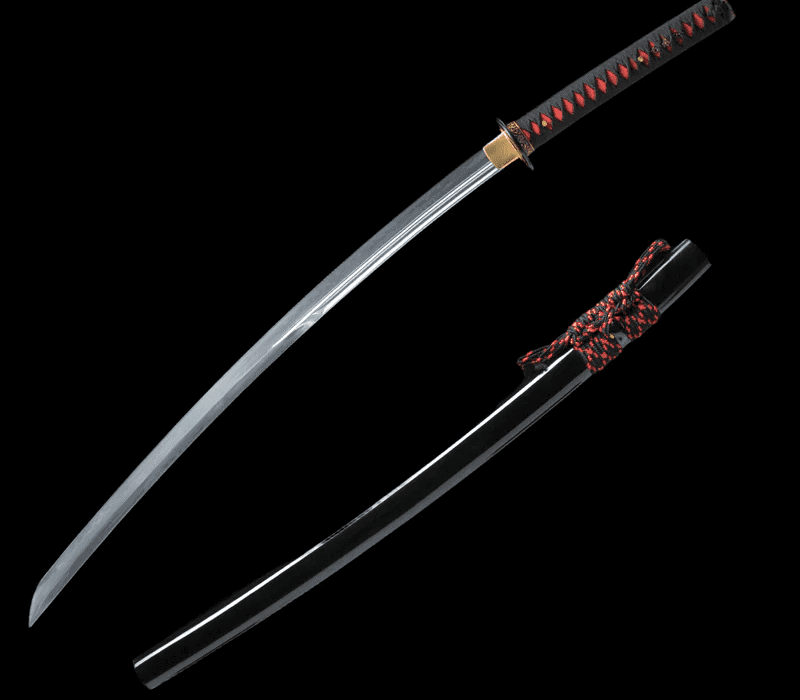If you are a martialist or sword enthusiast and love collecting various blades, then you definitely know about Katanas. Wait! What? Aren’t you aware of Japanese traditional swords? Well, no worries. We have got you. Give a read to this 7-minute unique piece of writing that is specifically designed for those passionate about swords and blades. Read on to know what this article will cover:
- Introduction of Katana
- A Brief History of Katana
- Countries Making Katana
- Overview of Types of Katana
- Reasons for Buying Japanese Katana
What is a Katana?
The type of Japanese sword that is specifically characterized by a slender, curved, single-edged blade with a tsuba (Tsuba is known as handguard) and a long grip to handle with two hands. A Katana is well-known for its cutting ability and sharpness. The Makotoswords Katanas are popular in Japanese culture because they have been the symbol of power and Samurai honor for generations. Besides in Japan, the Katana is known in the world due to its elegant design and sharp design.
Katana’s blade is forged via a unique process that consists of heating, folding along with multiple times hammering. No doubt, the blade of Katana is flexible yet strong.
History of Katana:
The history of Katana is as old as ancient Japan itself. The Katana was introduced centuries ago, between 1185 and 1333. According to data, it dates back to the Kamakura shogunate (Kamakura period) around the 13th century. They became popular when the trend of Samurai culture was flourishing in Japan.
In the early times, swords with straight blades were used in various countries including Japan. However, the evolution of Katana swords began when the bladesmiths wanted something unique in their blades. This all began during the Heian period. The Heian period started in 794 AD and ended 1185 AD. Katanas were introduced by the end of the Heian period, with its more distinctive form emerging in the Kamakura period.
Katanas were introduced when Japanese swordsmiths began testing to achieve a more curved blade rather than a straight one. Which eventually led to the introduction of Katana. No doubt, the curved blade of the Katana is the best equipment for combat fighters and cavalry.
Which Country is Best Known for Katanas?
Of course, the country from which they originated is Japan. Japanese Katanas are known around the world due to their sharp blade and distinct features. The Katana is a traditional sword of Japan that is known throughout the entire world. It has a long history and dates back to the Kamakura period between 1185-1333. They were developed when the Samurai classes began to rise in prominence.
As they became popular in the world, different bladesmiths from other countries also started crafting their own Katanas. But no one can beat the Japanese Katanas. Several swordsmiths from countries including China, the USA, Spain, and Germany began manufacturing Katana-like swords.
How Many Types of Japanese Katana Are There?
No doubt, the Japanese Katana industry covers numerous types of blades. However, it is a little bit tricky or it would be best to say complex to understand the hierarchy of katanas. Japanese Katanas are divided into several types depending on their usage, design, as well as historical context.
Well, let’s briefly discuss the types of Japanese katanas according to their diverse blade design and shapes. What are you waiting for? Let’s begin:
- Hira-Zukuri: It consists of a flat blade without a ridge line. It is quite similar to other blades including tanto and wakizashi.
- Shinogi-Zukuri: It is the most popular type of katana blade. Shinogi-zukuri is known for its defined shinogi (ridge line) and kissaki (distinct point of the blade).
- Kanmuri-Otoshi-Zukuri: It is another popular blade that falls in the Katana family. It is characterized by a tapered blade and thin mune (mune is known as the back edge or spine of the blade)
Other types of Japanese katanas according to their blade design and shape include Shobu-Zukuri, Unokubi-Zukuri, Kissaki-Moroho-Zukuri, etc.
Why Buy a Japanese Katana?
If you want to add a blade to your sword collection, then you should buy a Japanese Katana. There are more than enough reasons to invest in Japanese Katanas. Read on to know about them:
The very first reason to invest in Japanese Katanas is to enjoy the hallmarks of Japanese cultural and historical significance. By owning a Japanese Katana, you allow yourself to connect to ancient Japanese culture and samurai tradition. No doubt, it manifests the artistry and craftsmanship of various renowned Japanese swordsmiths.
It is best to invest in Japanese Katanas if you prefer high-quality artistry and craftsmanship. The mindblowing forging techniques used during manufacturing including differential hardening as well as folding make them a popular choice among blade enthusiasts. Sword enthusiasts often fall for the aesthetic qualities of blades which include temper line (hamon), handle wrapping (tsukamaki), as well as the guard (tsuba) of the blade.
Lastly, they are the best hand-held equipment for display and decoration purposes. Their value can increase over time. Moreover, blade enthusiasts are often looking for antique blades for their collection.
The Bottom Line:
Katanas are a type of sword with a slightly curved edge. They have a long interesting history with its roots in Japanese culture dating back to the 13th century. They have become quite famous outside Japan due to their elegant shape and sharp blade. Swordsmiths from other countries, after being inspired by the design and elegance of Japanese Katana, began experimenting with their own version of Katana.
Till now, there are numerous types of Japanese Katanas. Hira-Zukuri, Shinogi-Zukuri, etc are popular Katanas among others. Swordsmiths and blade enthusiasts invest in Katanas because it is a perfect blend of Japanese high-quality artistry and craftsmanship.







